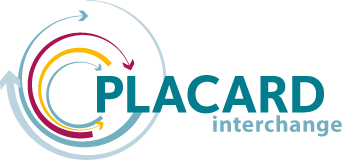Unravelling the complexity of the climate change adaptation (CCA) and disaster risk reduction (DRR) landscapes is one of the first steps needed to enhance cooperation and coherence between the two fields, and effectively inform research, policy and practice. To achieve this aim, it is important to identify the key actors operating in each field, as well as understand the interactions between them. How are the actors connected to each other across the networks, and what sort and level of interactions do they have?
To unravel the linkages, we applied Social Network Analysis (SNA) techniques to investigate the interactions within a group of thirty-two selected actors, analysing their responses to a questionnaire and calculating the most significant metrics.
We particularly focused on centrality measures, as they are good indicators of an actor’s power position. Degree centrality illustrates an actor’s ability to communicate directly with others in the network. Actors with high betweenness centrality have the power to connect disconnected groups, broker opinions and control information flow. Eigenvector centrality describes how well an actor is connected to powerful actors in the network. In addition, we applied cluster analysis to identify groups of actors with similar patterns of connections.
The results confirm that currently there are two distinct international “communities”, each including actors involved mainly in either CCA or DRR activities. The allocation of actors is not rigid, with visible variations according to the algorithms and indicators applied. In general, DRR actors appear to form a more cohesive and relatively isolated group, while CCA players are sparser and show broader interactions. Communication and collaboration exist both within and between the groups; communication is stronger within each field, collaboration between CCA and DRR fields is in place.
Our results
Further investigation allowed us to focus on the roles played by different actors:
- Climate-ADAPT emerged as the actor with the highest overall centrality, demonstrating their role in reciprocal communications with the other actors, but also in connecting out to groups that do not have reciprocal interactions.
- Other actors with high centrality values were the Directorate-General for Research and Innovation (DG RTD), European Environment Agency (EEA) and Directorate-General for Climate Action (DG CLIMA).
- DG CLIMA, followed by EEA and the Intergovernmental Panel on Climate Change (IPCC), are the actors with the highest number of ties the other actors reported to have with them.
We plan to carry out a second round of SNA during summer 2017 that will focus on national level networks.

